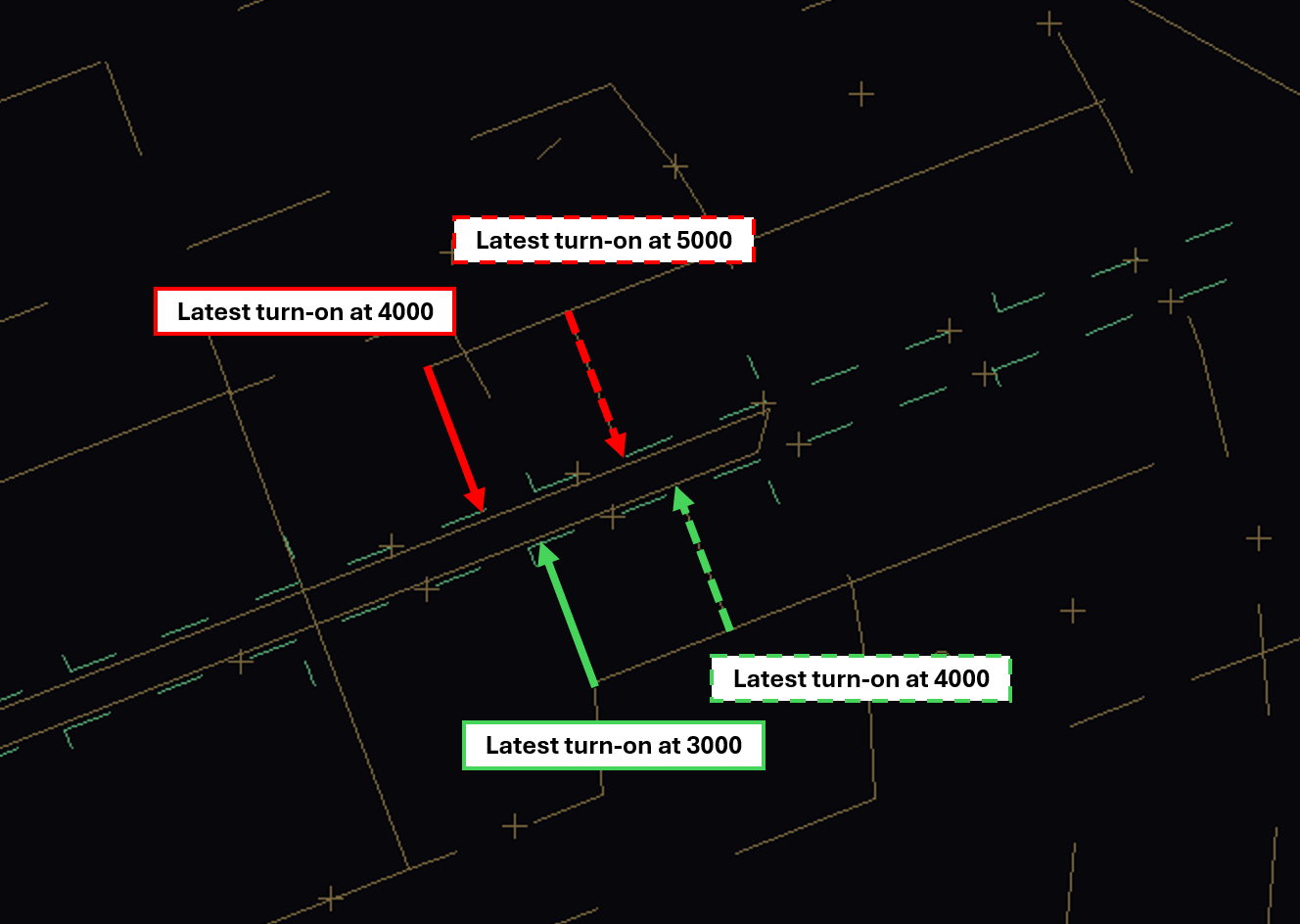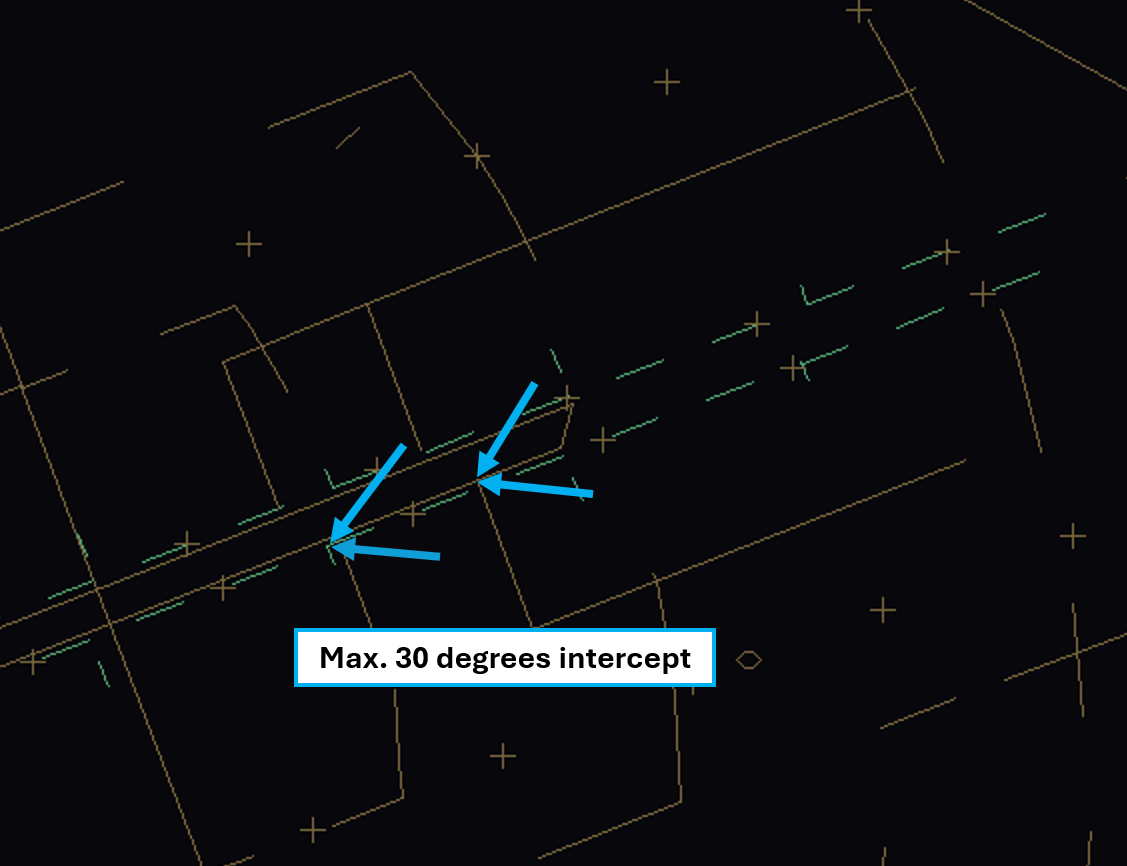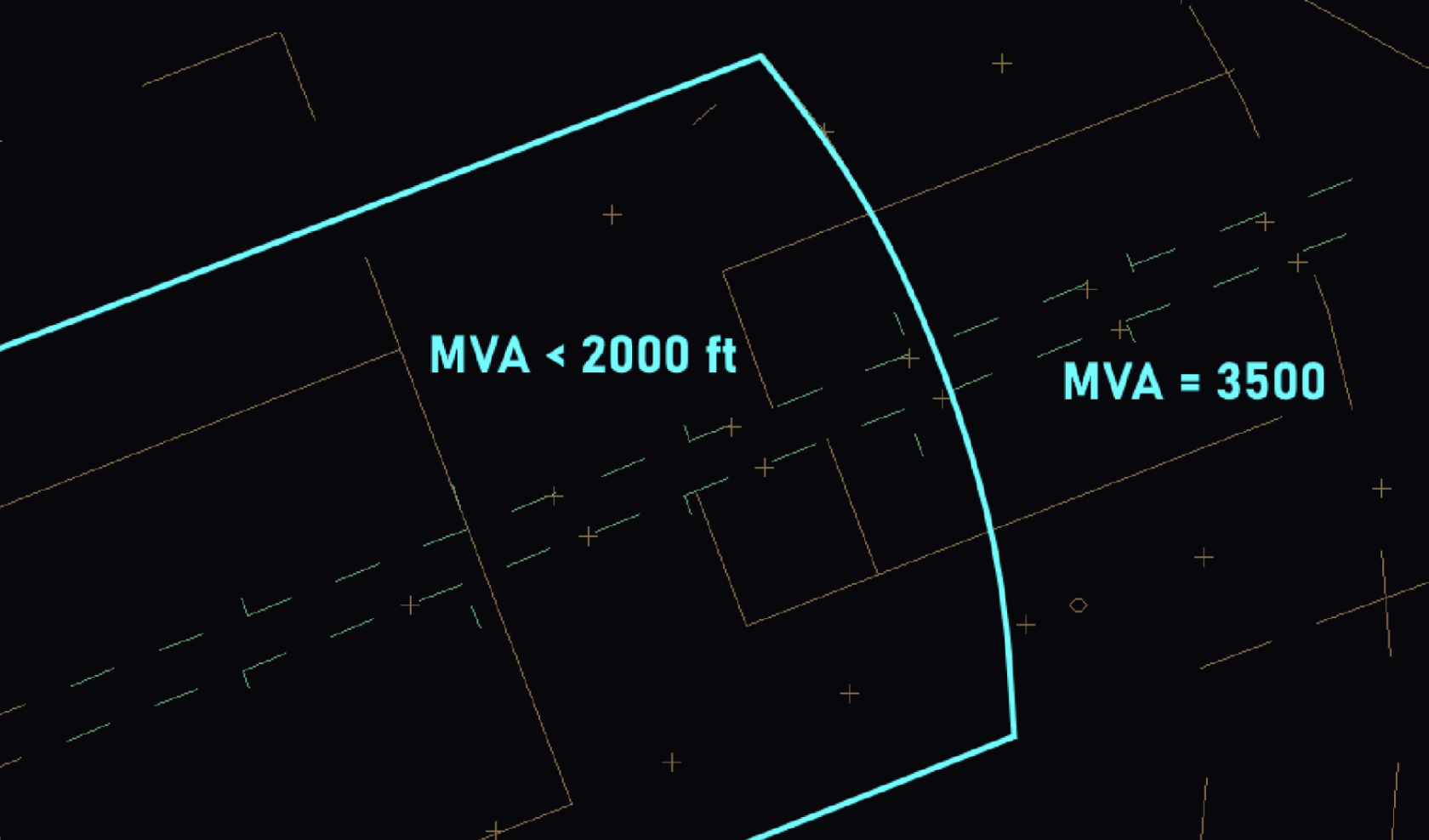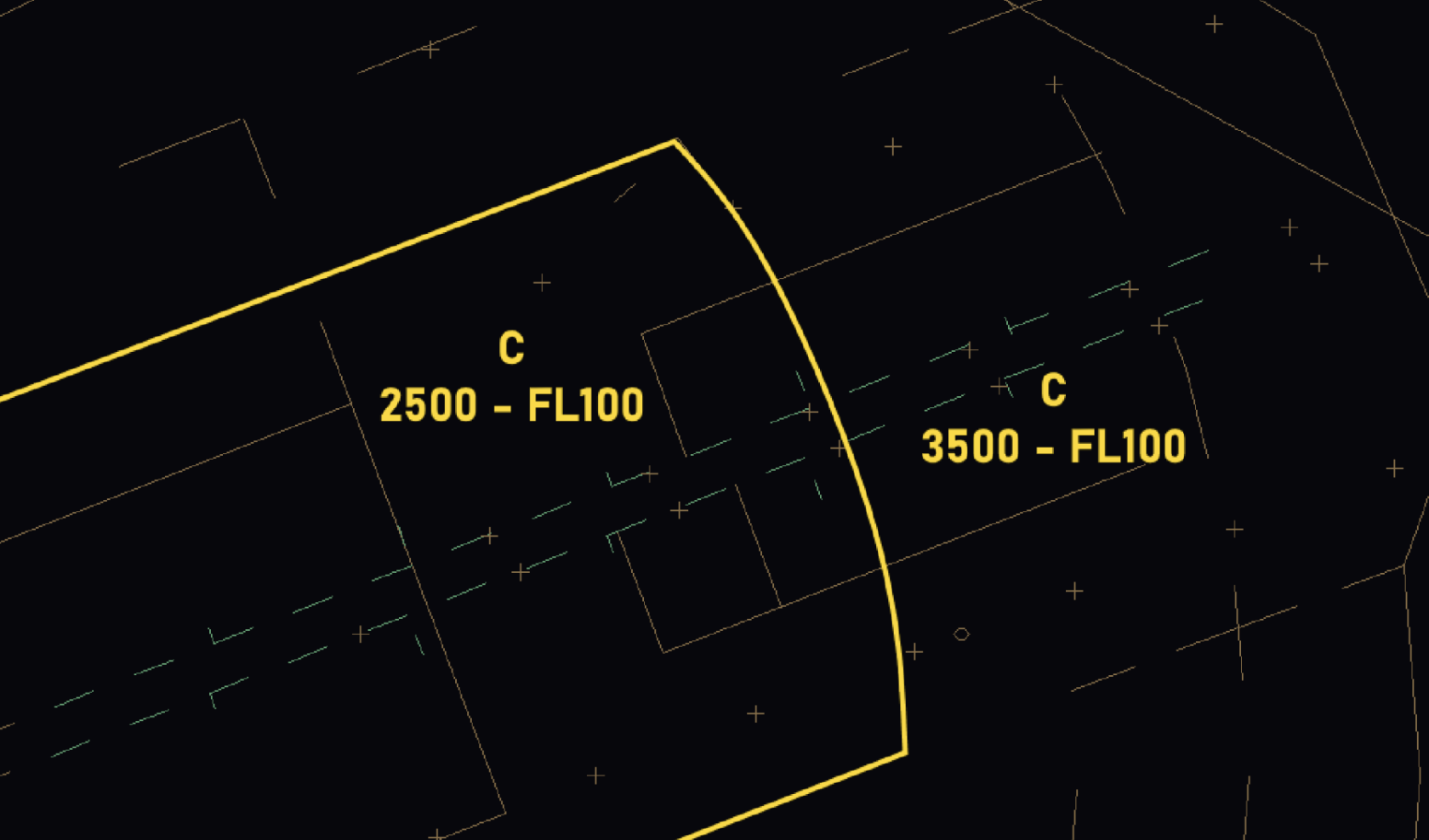Independent Approach Operations (BER)
Introduction and a word on efficiency
During high traffic operations in Berlin, independent parallel approach operations may be used. The following guide shall give a deeper look into the rules, requirements, best practices and general operations.
Since dependent parallel approaches (1.5 NM diagonal separation) are not allowed at EDDB, the use of independent parallel approaches can become necessary during traffic peaks.
Besides the requirements listed further down below, it does not make sense to switch to independent approach operations when…
- …there is not enough traffic to fill up the finals. In these cases, normal intercepts via 10 NM final are much more efficient.
- …the pickup controllers do not have enough capacity (high workload) to fill up the downwinds with enough traffic for independent operations to turn out efficiently.
Requirements (EASA)
REQUIREMENTS AND PROCEDURES FOR INDEPENDENT PARALLEL APPROACHES (EASA)
Staffing:
Exception from EASA requirements:
→ In EDDB one Feeder position is sufficient to work independent approach operations.
Informing the pilots:
- As early as practicable after an aircraft has established communication, the approach control unit advises the aircraft that independent parallel approaches are in force (e.g. ATIS: PARALLEL INDEPENDENT OPERATION IN PROGRESS)
- Aircraft are advised as early as possible of
- the assigned runway
- instrument procedure
- any additional information considered necessary to confirm correct selection
Aerodrome and procedural requirements:
- Runway centerlines are spaced by minimum of 1035 m
- The instrument approach procedure that aligns the aircraft with the extended runway centerline is a precision approach procedure
- The nominal tracks of of the missed approach procedures diverge by at least 30 degrees
- A NTZ of at least 60 m (2 000 ft) wide is established equidistant between extended runway centerline
Separation by ATC:
Aircraft do not penetrate the depicted No Transgression Zone (NTZ) by instructions as follows:
A minimum of a nominal 1 000 ft vertical separation or, subject to ATS surveillance system capabilities, a minimum of 3.0 NM horizontal separation is provided between aircraft on adjacent approaches until both aircraft are established on a final approach course or track.
None of the following meteorological conditions exists:
- windshear
- turbulence
- downdrafts
- strong crosswind
- other significant meteorological such as thunderstorms which might otherwise increase deviations from the final approach course or track to the extent that safety may be impaired.
In Berlin, only the ILS Z and RNP Z can be used for parallel independent approach operations. The RNP Z can only be used under LNAV/VNAV or LPV modes.
Handoff to Arrival (Feeder)
During Independent Approach operations, the aircraft shall be transferred from Pickup to Feeder as follows:
- RWY 06L/24R: at 6000 ft to DBANT (on EDDB QNH)
- RWY 06R/24L: at 4000 ft to DBAST (on EDDB QNH)
Two-Feeder Operations
Independent Approach operations may be performed by using two Feeder positions. The responsibilities are defined as follows:
- DBANT = EDDB_AN_APP (136.105): responsible for 06L/24R
- DBAST = EDDB_AS_APP (121.130): responsible for 06R/24L
During Two-Feeder operations, runway 06L/24R shall only intercept at a minimum of 5000 ft or higher. Aircraft for runway 06R/24L shall only intercept at 3000 ft or 4000 ft. Strict adherence to the turning areas is required! (see below)
Turning Areas
The turning area is available as a Topsky map and helps to reduce the complexity and coordination between the two Feeders. The turning area will show the point where aircraft for a specific runway are allowed to intercept the localizer.
During Independent Approach operations, aircraft must fly 2 NM levelled while established on the final track before intercepting the glide path.
High final:
For runway 24R/06L, the rule above means aircraft intercepting at 4000 ft must therefore intercept the final at ~14 NM or longer. When intercepting at 5000 ft, the aircraft must intercept the final at ~17 NM or longer.
Low final:
Since aircraft intercepting 24L/06R need to stay separated with at least 3 NM/1000 ft until established on final track, their latest turn-on point for an intercept at 3000 ft needs to be 3NM away from the point where aircraft on the high final leave 4000 ft on the glidepath (~12 NM final). The same applies when intercepting 4000 ft on 24L/06R, where aircraft need to be 3 NM away from the point where the aircraft on the high final would leave 5000 ft on the glidepath (~15 NM final).
Final turns:
Intercept angles for the final track must not exceed 30 degrees!
Base turns:
The Feeder responsible for the low final (south) shall not clear aircraft towards the final until they have vacated the intercept level of the high final (north). That means aircraft planned for 24L/06R must be at 3000 ft (when 4000 ft is used for the high final) or 4000 ft (when 5000 ft is used for the high final) inside the IPA turning boxes (see image below).
Never turn an aircraft on base leg for the south final unless they have established 1000 ft separation to the north final!
MVA and Airspace
Always pay close attention to the MVA and airspace structure when working south feeder! It may not be possible to turn aircraft base before they reach the limits of the lowered MVA and airspace class C. In these cases, hold aircraft at 4000 ft and let them intercept within the respective turn-on area.
South feeder should always plan ahead and evaluate whether a base turn before reaching the 3500 ft MVA is possible or not. If that is the case, aircraft should be cleared to 3000 ft on initial contact to get the aircraft low enough as early as possible.
Non-Transgression Zone (NTZ)
- Width 610 m
- This leaves 645 m normal operation zone on either side
If an aircraft deviates from the localizer and enters the NTZ, separation must be achieved immediately by turning out the other aircraft from the localizer.
Phraseology:
TURN LEFT (or RIGHT) (number) DEGREES (or HEADING) three digits) IMMEDIATELY TO AVOID TRAFFIC [DEVIATING FROM ADJACENT APPROACH], CLIMB TO (altitude)
Transfer to Tower
Transfer to Tower frequencies will take place when established on the localizer at about 14 NM from Touchdown.
Tower controllers and Approach controllers shall monitor the approach at any time!
Perspective of the Pickup-Controller
Runway allocation
Both Pickups will assign the runway as soon as possible. By default, the runway should be assigned according to the standard runway assignment described in the SOP. Nevertheless, it is the responsibility of both Pickup controllers to observe the current load balance. If required, traffic parking on stands A, B, C, D or E may be shifted to the other runway. This should be coordinated between both Pickups.
During very high traffic, both Pickups may agree to segregate arrivals (KETAP/OGBER RWY 06L/24R, KLF/ATGUP/NUKRO RWY 06R/24L). This will reduce the complexity in the TMA but deviates from real-life procedures. When using this procedure, traffic parking north of RWY 06L/24R should always be assigned RWY 06L/24R to reduce taxi times and to avoid the runway crossing.
Handoffs to Arrival (Feeder)
Aircraft approaching two different runways do not have to be sequenced to have a minimum spacing in between them, as it is recommended during normal operations. You can always hand them off on top of each other; they will be handled independently, after all.
Switching to Independent Approach Operations
Only after coordination with DBANT/DBAST, the mode of operation is changed:
- DBAS shall notify DBAN and Berlin Tower about the mode of operation change.
- DBANT/DBAST shall activate the turning area (Areas folder in TopSky Maps)
- ATIS shall be changed to display "PARALLEL INDEPENDENT OPERATIONS IN PROGRESS"
- All aircraft already in the arrival sectors (DBAN, DBAS, DBANT or DBAST) shall be notified about the mode of operation change.





